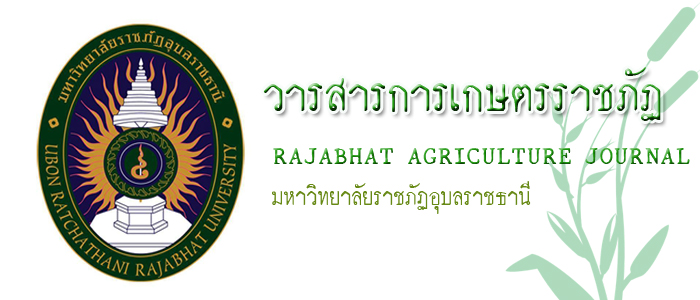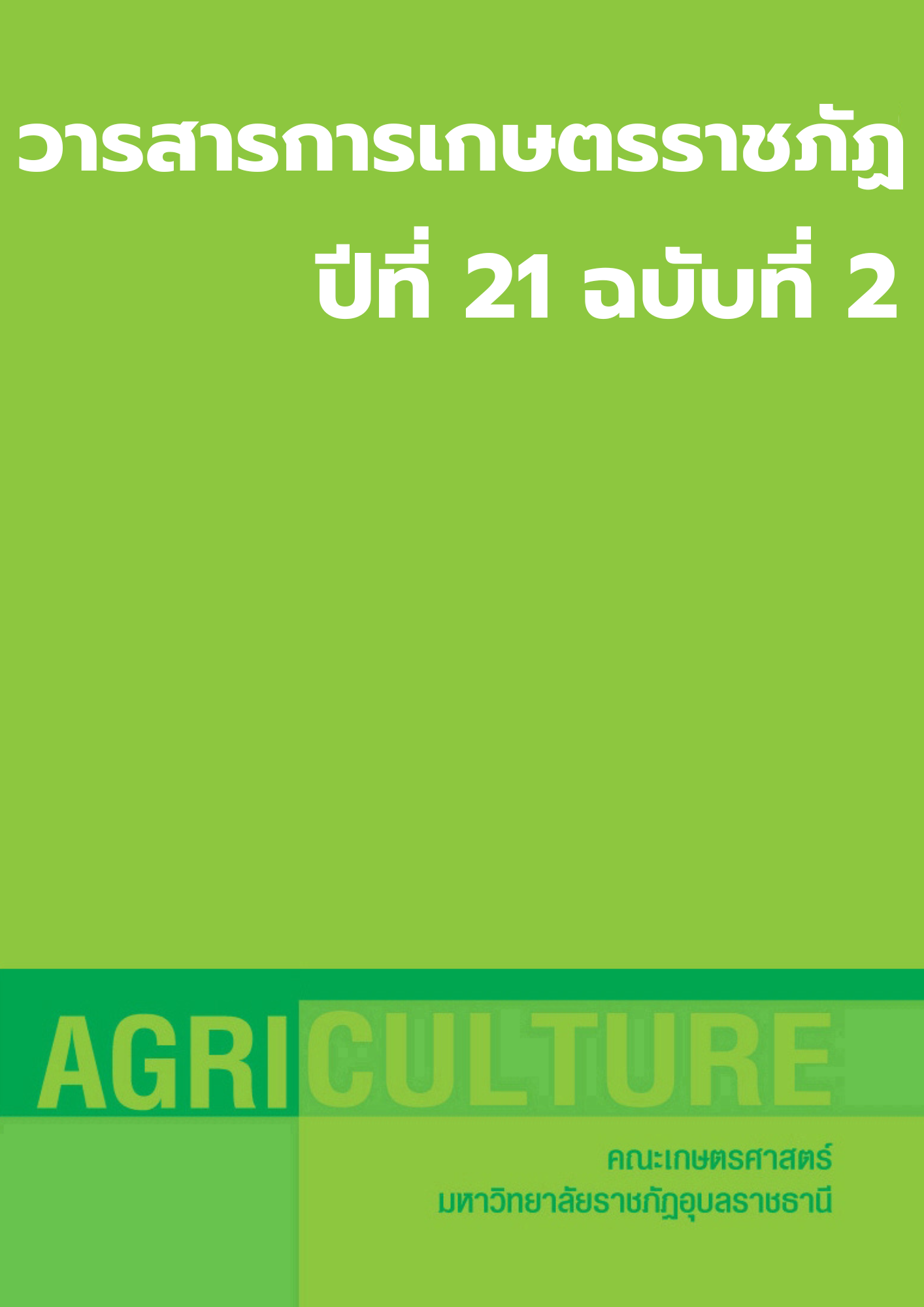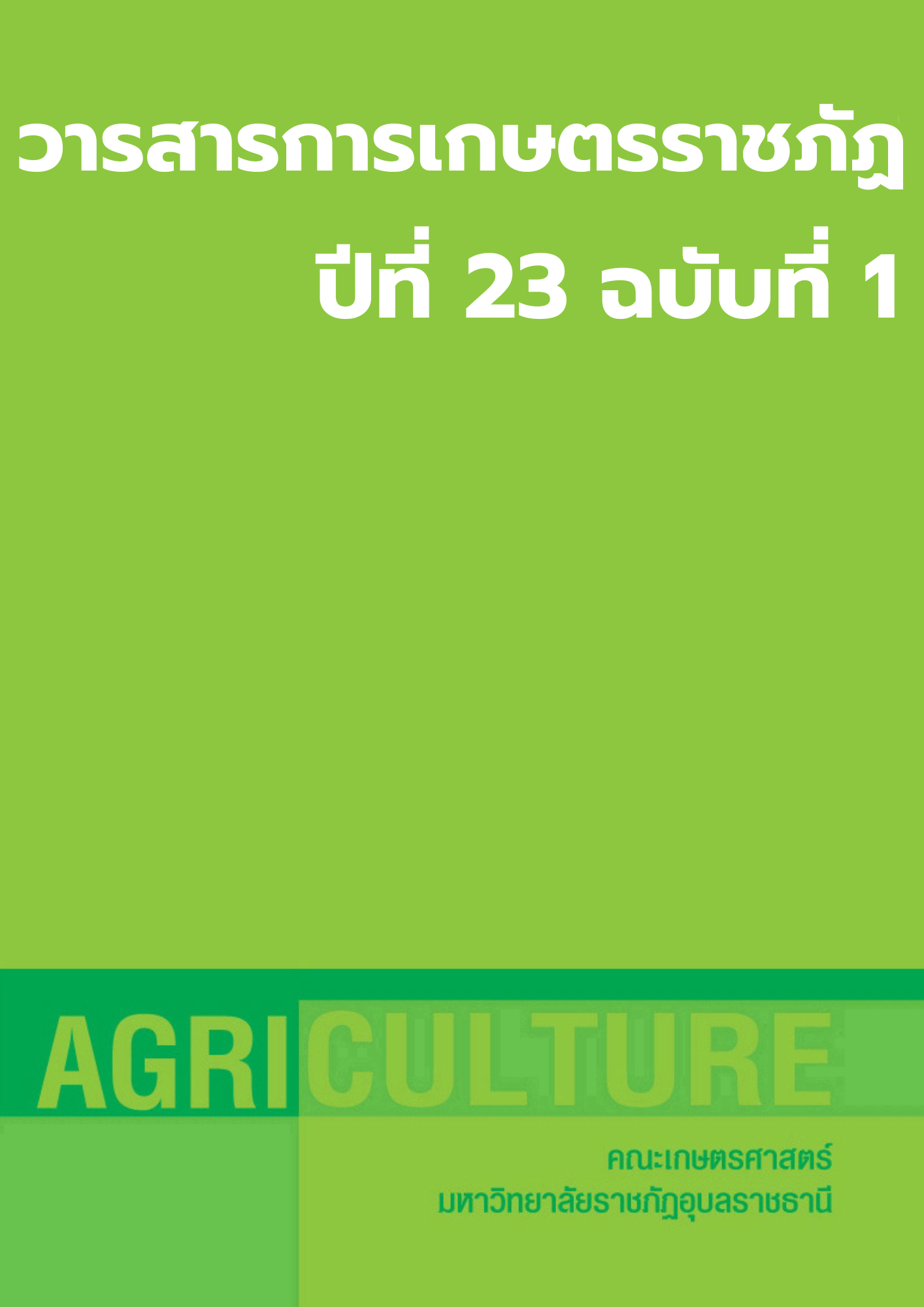
การฟื้นฟูทรัพยากรพืชพื้นบ้านกับความมั่นคงทางอาหารระดับชุมชน ริมฝั่งแม่น้ำโขงตอนล่างของประเทศไทย

การฟื้นฟูทรัพยากรพืชพื้นบ้านกับความมั่นคงทางอาหารระดับชุมชน ริมฝั่งแม่น้ำโขงตอนล่างของประเทศไทย
Restoration Native Plant Resources towards Communities Food Security in Lower Mekong River Bank of Thailand
--------------------------------------------
โดย วลัยพรรณ ชินชัยสิรภัทร
ผู้แต่งร่วม สุพรรนี อะโอกิ
ประเภท : บทความวิจัย
ปีที่ตีพิมพ์ : วารสารเกษตรราชภัฏ ปีที่ 21 ฉบับที่ 2
ผู้เข้าชม 0
วันที่ปรับปรุงข้อมูล : 2024-09-30 13:32:58
บทคัดย่อ
ป่าเป็นแหล่งที่อยู่ของพืชในสภาพธรรมชาติ เมื่อพื้นที่ป่าถูกแปรสภาพทำให้พืชพื้นบ้านหลายชนิดมีปริมาณลดลงจนอาจเลือนหายไปจากวิถีชีวิตชุมชน งานวิจัยนี้มีวัตถุประสงค์เพื่อศึกษา 1) แนวทางการฟื้นฟูทรัพยากรพืชพื้นบ้านของชุมชน 2) แนวทางการส่งเสริมการฟื้นฟูทรัพยากรพืชพื้นบ้านไปสู่การปฏิบัติ 3) สถานการณ์ความมั่นคงทางอาหารระดับชุมชน และ 4) การจัดทำข้อมูลทรัพยากรพืชพื้นบ้านของชุมชน พื้นที่ศึกษา 3 หมู่บ้าน คือ บ้านเวินบึก บ้านห้วยหมากใต้ และบ้านท่าแพ อำเภอโขงเจียม จังหวัดอุบลราชธานี ดำเนินการตั้งแต่เดือนตุลาคม 2559 ถึงเดือนมิถุนายน 2561 กลุ่มตัวอย่าง ได้แก่ ผู้นำชุมชน ตัวแทนชาวบ้าน อาสาสมัครสาธารณสุข (อสม.) ปราชญ์ชาวบ้าน และตัวแทนเจ้าหน้าที่หน่วยงานของรัฐในพื้นที่ เครื่องมือที่ใช้ ได้แก่ แบบสำรวจความมั่นคงด้านอาหาร แบบสัมภาษณ์ แบบบันทึกการประชุมกลุ่ม สถิติที่ใช้วิเคราะห์ข้อมูล ได้แก่ ค่าเฉลี่ย ส่วนเบี่ยงเบนมาตรฐาน และการวิเคราะห์เชิงเนื้อหา ผลการวิจัย พบว่า 1. แนวทางการฟื้นฟูทรัพยากรพืชพื้นบ้านของชุมชน มีดังนี้ การลดปริมาณการทำลายทรัพยากรพืชพื้นบ้าน การรณรงค์การปลูกพืชทดแทน การใช้ทรัพยากรพืชพื้นบ้านอย่างคุ้มค่าและการกำหนดมาตรการทางสังคมเพื่อการอนุรักษ์ 2. แนวทางการส่งเสริมการฟื้นฟูทรัพยากรพืชพื้นบ้านไปสู่การปฏิบัติของชุมชนมีดังนี้ วิธีการใช้ประโยชน์ที่ดินและผืนป่า รูปแบบการส่งเสริมการขยายพันธุ์พืชและการอนุรักษ์พันธุกรรมพืชกิจกรรมสร้างความตระหนักรู้ต่อการใช้ทรัพยากรเพื่อประโยชน์สูงสุดและกระบวนการปฏิบัติตามมาตรการทางสังคมเพื่อการอนุรักษ์ 3 หมู่บ้านเวินบึกมีระดับความมั่นคงด้านอาหารสูงสุดตามตัวชี้วัดที่ 1 ด้านการพึ่งตนเองด้านอาหาร มีคะแนนเฉลี่ย 2.79 หรือร้อยละ 55.87 ส่วนหมู่บ้านท่าแพและหมู่บ้านห้วยหมากใต้มีระดับความมั่นคงด้านอาหารสูงสุดตามตัวชี้วัดที่ 5 การเข้าถึงอาหารที่มีคุณภาพ คือมีคะแนนเฉลี่ย 3.18 หรือร้อยละ 63.60 และ 3.40 หรือร้อยละ 68.00 ตามลำดับ 4. วิเคราะห์ข้อมูลทรัพยากรพืชพื้นบ้านของชุมชนและจำแนกตามการใช้ประโยชน์ 5 ด้าน คือ 1) พืชอาหาร 2) สมุนไพร 3) ไม้ผล 4) เห็ด และ 5) การถนอมอาหาร คำสำคัญ: การฟื้นฟู, ทรัพยากรพืชพื้นบ้าน, ความมั่นคงทางอาหารระดับชุมชน, ชุมชนริมฝั่งแม่น้ำโขงตอนล่าง
